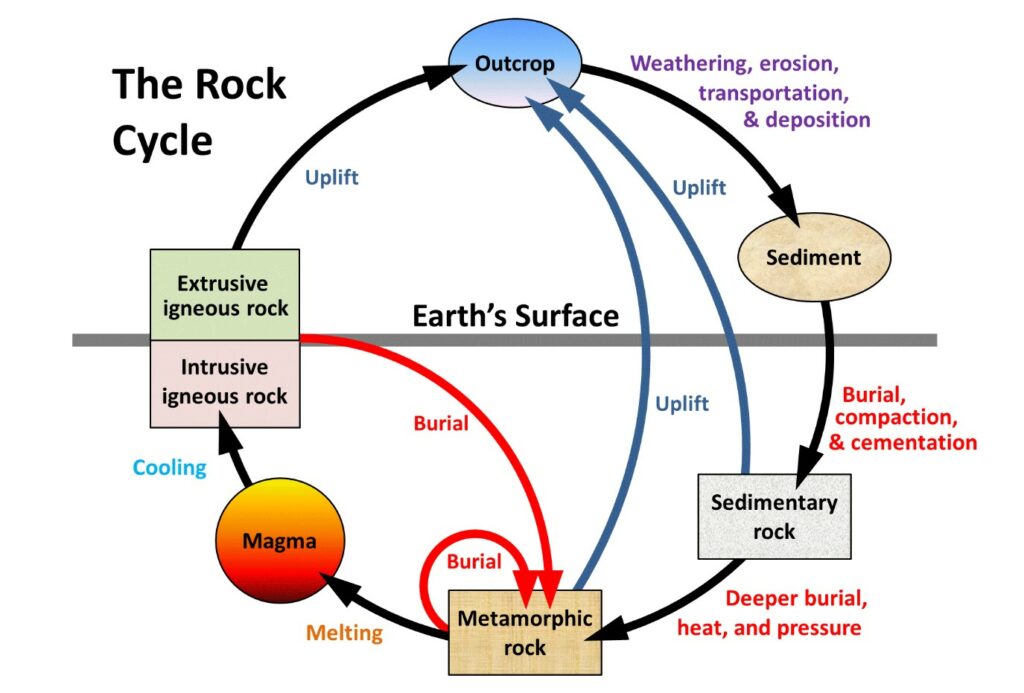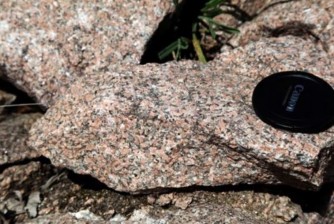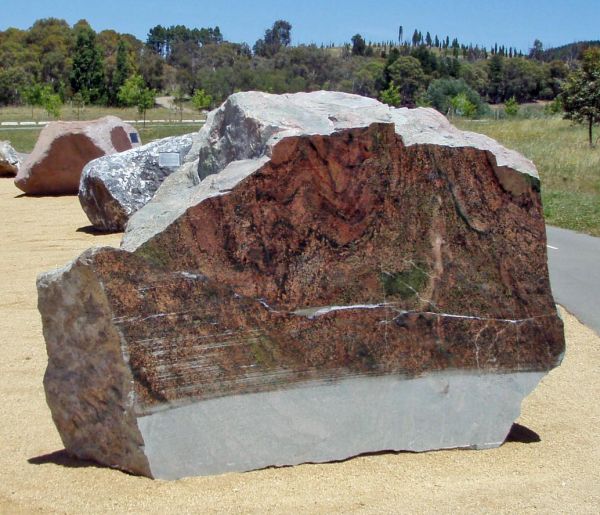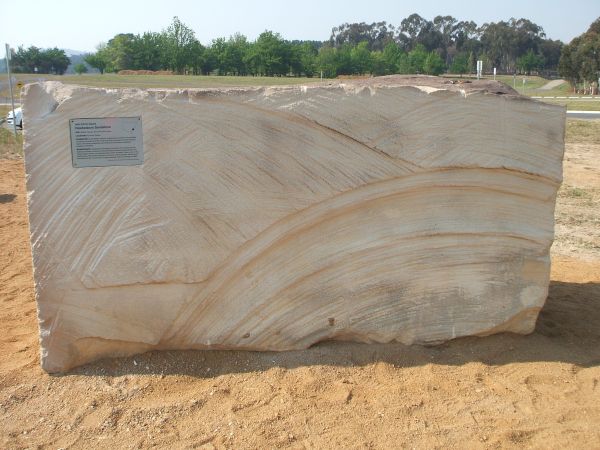
Our planet, Earth, is about 4,600 million (4.6 billion) years old. It started out as a sphere of molten rock, and the first solid rocks came from the solidifcation of the molten magma. The Earth has not remained static since its formation, and with heat generated from the core and mantle, our rocks have been changed and formed into new rocks. Some rocks have remained stable for billions of years while some are continuously being reformed.
Rocks are made up of usually two or more minerals that have been formed by various geological processes. Minerals are naturally occurring substances with specific chemical and physical properties, composition and structure.
The Rock Cycle illustrates how processes create and change rocks above and below the Earth’s surface. This cycle is well-demonstrated in the following illustration.

Rocks can be divided into three main categories, as shown in the Rock Cycle diagram:
- Igneous
- Sedimentary, and,
- Metamorphic
All of these categories are represented in the collection of the National Rock Garden.
Igneous rocks are formed by the solidification of magma (molten rock below the Earth’s surface) or lava, molten material brought to the Earth’s surface through volcanoes. Those that are formed below the Earth’s surface are referred to as intrusive igneous rocks, while those that form from lava are referred to as extrusive rocks.
Extrusive igneous rocks solidify more rapidly than intrusive igneous rocks as the lava is exposed to temperatures at the Earth’s surface that are much cooler than deep within the Earth’s crust. This results in the smaller crystals.
Metamorphic rocks are formed from pre-existing rocks when exposed to significant temperatures and pressures. Usually the chemical composition won’t change but the appearance will, with new minerals potentially being formed.
Two classes of metamorphic rocks are identified: those formed through contact metamorphism and those formed through regional metamorphism. Contact metamorphism typically occurs when pre-existing rocks come into close proximity to intrusions of magma, but the effects do not extend very far. Regional metamorphism, on the other hand, will affect much larger volumes of rocks that are exposed to deep burial such as during the formation of new mountain ranges.
Sedimentary rocks are formed from the accumulation of loose fragments of rocks (such as sand) or material created by biological or chemical processes. Two types of sedimentary rocks are identified: clastic and biogenic/chemical.
Clastic sedimentary rocks are formed by the accumulation, compaction and cementation of rock fragments. These rocks have a wide range of grain sizes ranging from shales at the very fine-grained end all the way to conglomerates, which are very coarse-grained. The biological and chemical sedimentary rocks form from the crystallisation of chemicals dissolved in water. Limestones are an example of this type of sedimentary rock.





